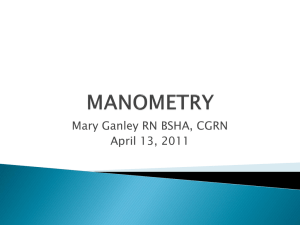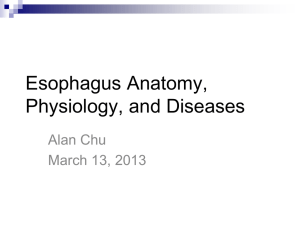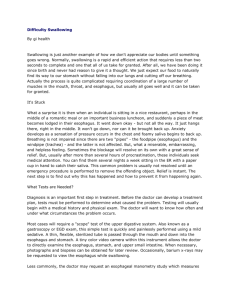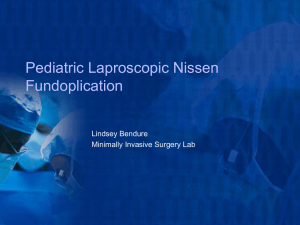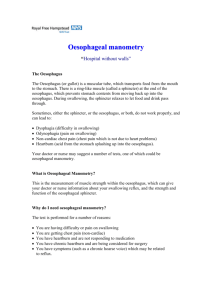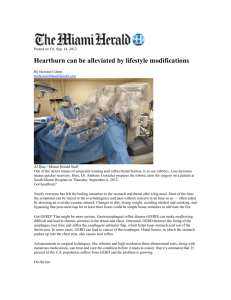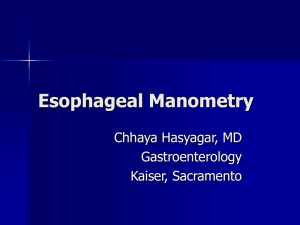Esophageal Manometry Test
advertisement
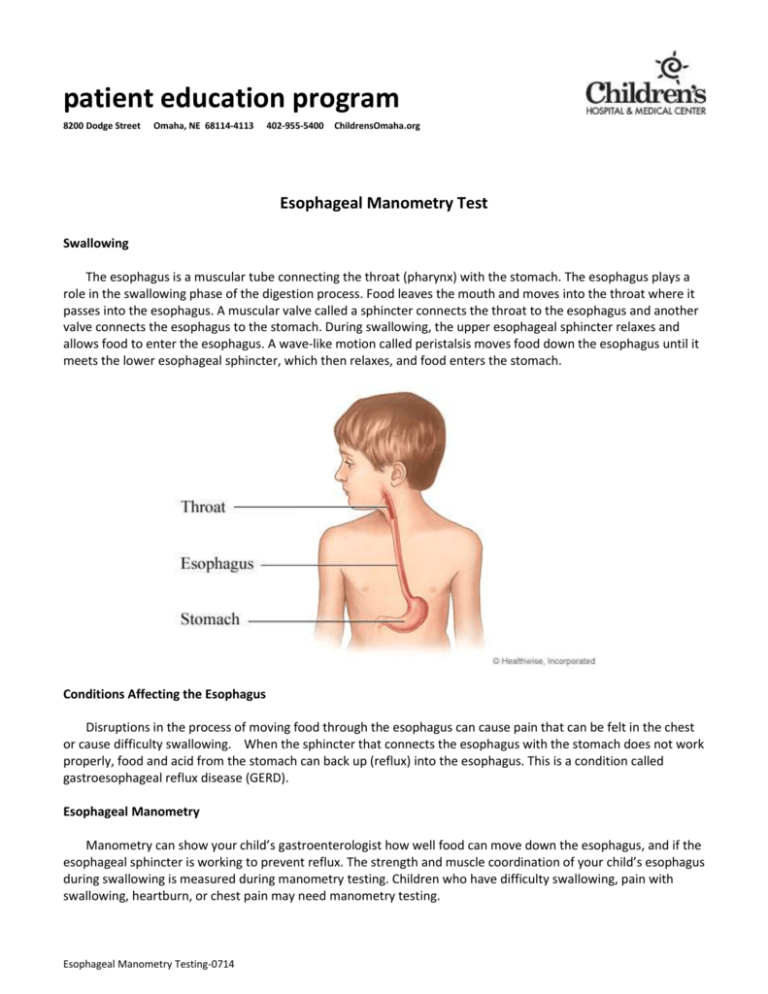
patient education program 8200 Dodge Street Omaha, NE 68114-4113 402-955-5400 We know children ChildrensOmaha.org Esophageal Manometry Test Swallowing The esophagus is a muscular tube connecting the throat (pharynx) with the stomach. The esophagus plays a role in the swallowing phase of the digestion process. Food leaves the mouth and moves into the throat where it passes into the esophagus. A muscular valve called a sphincter connects the throat to the esophagus and another valve connects the esophagus to the stomach. During swallowing, the upper esophageal sphincter relaxes and allows food to enter the esophagus. A wave-like motion called peristalsis moves food down the esophagus until it meets the lower esophageal sphincter, which then relaxes, and food enters the stomach. Conditions Affecting the Esophagus Disruptions in the process of moving food through the esophagus can cause pain that can be felt in the chest or cause difficulty swallowing. When the sphincter that connects the esophagus with the stomach does not work properly, food and acid from the stomach can back up (reflux) into the esophagus. This is a condition called gastroesophageal reflux disease (GERD). Esophageal Manometry Manometry can show your child’s gastroenterologist how well food can move down the esophagus, and if the esophageal sphincter is working to prevent reflux. The strength and muscle coordination of your child’s esophagus during swallowing is measured during manometry testing. Children who have difficulty swallowing, pain with swallowing, heartburn, or chest pain may need manometry testing. Esophageal Manometry Testing-0714 What to expect during Esophageal Manometry Testing: You will be asked to arrive at the CARES unit 1 hour prior to the scheduled procedure time. One or two parents may be present during the testing. Your child should not eat or drink for 4 hours prior to the test. A painrelieving medication will be applied inside your child’s nose prior to the procedure to make the procedure more comfortable. A small, flexible tube will be passed down through the nose, into the esophagus and into the stomach. Your child will be awake and will be able to breathe normally throughout the procedure. During the test, your child will be asked to swallow liquids or gelatin at different times, while a small sensor records information. The procedure should take approximately 30 minutes to an hour. After the procedure, the physician will remove the tube. Your child may experience a slight soreness in his or her throat for a short period of time. This is normal, and should be resolved within a few hours. The readings from the test will be interpreted and you will be notified when the test results are available. If you have not heard from our office after 10 days about your results, please contact us at 402-955-5700. Esophageal Manometry Testing-0714


